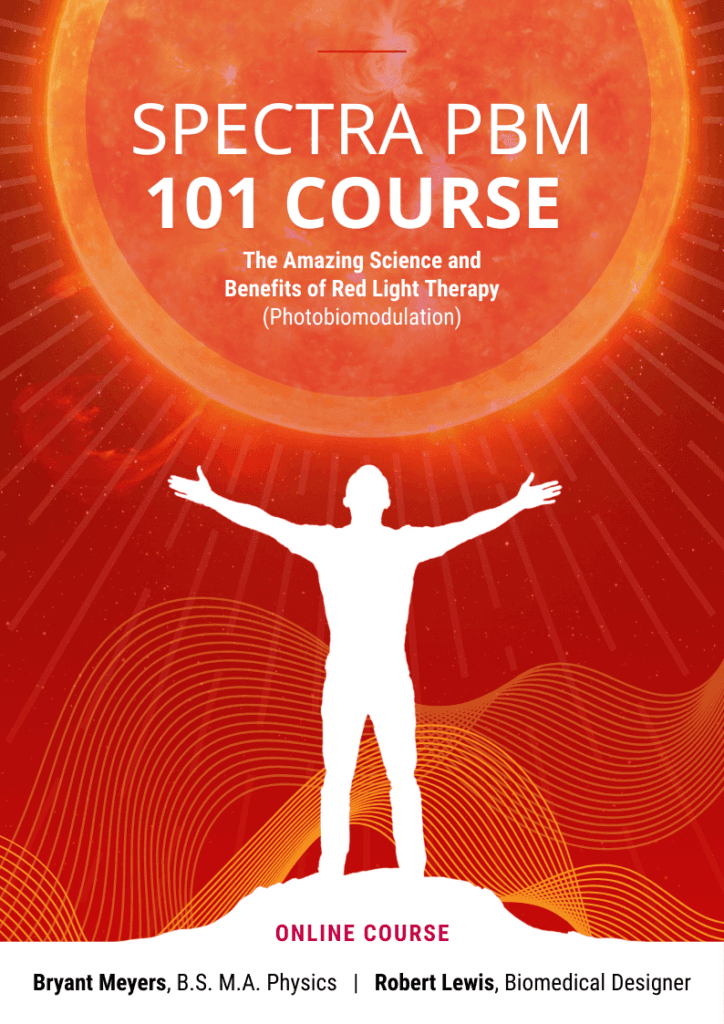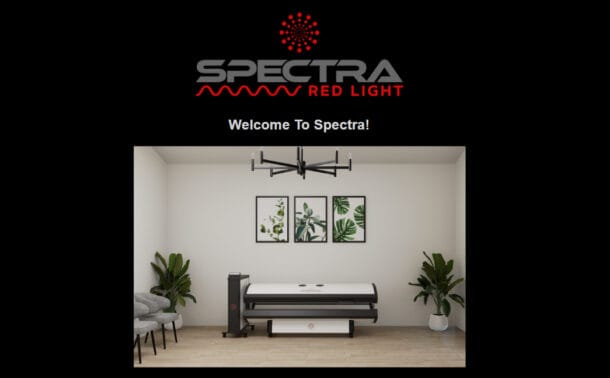Red Light Therapy (RLT), through the scientifically validated principles of Photobiomodulation (PBM), offers a compelling, mitochondria-centered approach to supporting lung and respiratory health. According to the World Health Organization, chronic respiratory diseases affect more than 300 million people globally, with conditions like asthma, chronic obstructive pulmonary disease (COPD), and post-viral lung inflammation contributing significantly to long-term disability and reduced quality of life.[1] As respiratory health becomes an increasing concern, especially in the wake of global viral outbreaks, there is growing interest in non-invasive, biologically targeted strategies that support pulmonary function at the cellular level.
Red Light Therapy (RLT), also known as Photobiomodulation (PBM), has emerged as a science-backed modality that offers potential benefits for lung and respiratory health. Rather than working through pharmacological or mechanical means, RLT interacts directly with the body’s cells via specific wavelengths of visible red and near-infrared (NIR) light. These wavelengths penetrate biological tissues and are absorbed by cytochrome c oxidase (CcO), a key enzyme in the mitochondrial electron transport chain. This light-induced activation enhances adenosine triphosphate (ATP) synthesis, improves mitochondrial respiration, and reduces oxidative stress by modulating reactive oxygen species (ROS).
In the context of lung physiology, these biological mechanisms translate into a measurable reduction in pulmonary inflammation, improved alveolar gas exchange, and enhanced tissue repair and oxygenation. As evidence accumulates from preclinical and clinical studies, RLT is gaining recognition as a safe, non-invasive modality that may complement traditional respiratory care approaches and offer supportive benefits for individuals dealing with both chronic and acute pulmonary conditions.
The Respiratory System and the Cellular Burden of Inflammation and Oxidative Stress
The lungs are not only responsible for gas exchange but also play a crucial immunological role, acting as the first line of defense against airborne pathogens and environmental toxins. The delicate architecture of the respiratory system, particularly the alveoli and bronchioles, makes it highly susceptible to cellular damage caused by persistent inflammation and oxidative stress.
At a physiological level, efficient respiratory function depends on the integrity of the alveolar-capillary membrane, where oxygen is transferred into the bloodstream and carbon dioxide is expelled. This process is tightly regulated by alveolar epithelial cells (Type I and II pneumocytes), pulmonary macrophages, and the surrounding vascular endothelium. When these cells are exposed to chronic irritants, such as pollutants, allergens, viral particles, or smoking byproducts, the result is often an overproduction of reactive oxygen species (ROS) and an upregulation of pro-inflammatory cytokines like interleukin-6 (IL-6), tumor necrosis factor-alpha (TNF-α), and interferon-gamma (IFN-γ).
This inflammatory cascade leads to mitochondrial dysfunction, cellular energy deficits, and impaired tissue repair. Mitochondria, being both producers and targets of ROS, undergo membrane depolarization and a decrease in adenosine triphosphate (ATP) synthesis, limiting the energy supply required for ciliary function, surfactant production, and epithelial regeneration. Over time, this can compromise pulmonary elasticity, reduce gas exchange efficiency, and increase susceptibility to acute respiratory infections or chronic diseases such as chronic obstructive pulmonary disease (COPD) and pulmonary fibrosis.
This is where Red Light Therapy (RLT) offers a biologically grounded intervention. By delivering specific wavelengths of visible red and near-infrared (NIR) light, RLT targets cytochrome c oxidase (CcO) in the inner mitochondrial membrane. This photonic stimulation enhances electron transport, leading to a measurable increase in ATP production, restoration of mitochondrial membrane potential, and modulation of excessive ROS. In turn, these effects attenuate inflammatory signaling pathways, promote anti-apoptotic gene expression, and support tissue homeostasis.
Through these mechanisms, RLT helps counteract the cellular damage commonly associated with respiratory dysfunction. It does not act as a respiratory assist device or medication but instead provides an internal cellular environment more conducive to repair, resilience, and optimal function, supporting both the structure and physiology of the lungs at the mitochondrial level.
What Is Red Light Therapy (Photobiomodulation)?
Red Light Therapy (RLT), scientifically known as Photobiomodulation (PBM), is a non-invasive modality that uses specific wavelengths of light to stimulate physiological processes at the cellular level. Rather than acting pharmacologically or mechanically, PBM influences cellular behavior by delivering low-level visible red and near-infrared light to biological tissues. These wavelengths are chosen for their ability to penetrate skin, muscle, and, to some extent, thoracic tissues, reaching the mitochondria of target cells.
The core mechanism of action begins with the absorption of photons by cytochrome c oxidase (CcO), an essential enzyme in the mitochondrial respiratory chain (Complex IV). When CcO absorbs red or near-infrared light, it undergoes a conformational change that accelerates electron transport and enhances the reduction of oxygen to water. This upregulation increases the proton gradient across the inner mitochondrial membrane, leading to greater production of adenosine triphosphate (ATP) via oxidative phosphorylation.
In the context of lung and respiratory health, this increase in ATP availability is critical. Pulmonary epithelial cells, alveolar macrophages, and vascular endothelial cells rely heavily on mitochondrial energy for processes such as barrier maintenance, surfactant production, mucociliary clearance, and inflammatory regulation. By restoring cellular bioenergetics, RLT supports these vital respiratory functions, especially in tissues impaired by chronic inflammation or oxidative damage.
Additionally, PBM exerts significant immunomodulatory effects. It has been shown to downregulate pro-inflammatory cytokines (e.g., TNF-α, IL-1β) while enhancing the expression of anti-inflammatory mediators such as interleukin-10 (IL-10). This helps rebalance the immune response in lung tissue that has been dysregulated by chronic insults or infection. RLT increases nitric oxide (NO) bioavailability, which improves local vasodilation and microcirculation, facilitating better oxygen delivery and carbon dioxide removal in the alveolar regions.
RLT’s ability to modulate reactive oxygen species (ROS) levels also plays a key role. While excessive ROS can drive cellular damage, controlled levels function as signaling molecules in pathways responsible for cell proliferation, migration, and repair. PBM carefully restores redox balance by reducing pathologic ROS without fully suppressing their physiological signaling roles.
In respiratory applications, these mechanisms converge to reduce pulmonary inflammation, support alveolar-capillary integrity, and enhance tissue recovery after injury or infection. Whether applied to individuals with chronic respiratory diseases or those recovering from acute lung insults, Red Light Therapy offers a mitochondrial-based strategy to promote cellular resilience, improve oxygen utilization, and restore pulmonary homeostasis, all without drugs, invasive procedures, or systemic side effects.

Scientific Evidence Supporting Red Light Therapy for Respiratory Function
The therapeutic application of red and near-infrared light for respiratory health has garnered increasing attention in recent years, particularly due to its compelling anti-inflammatory and immunomodulatory effects at the cellular level. A growing body of preclinical and clinical research supports the role of Photobiomodulation (PBM) in enhancing pulmonary function, reducing inflammation, and supporting tissue repair in various respiratory conditions.
One of the most comprehensive assessments of PBM’s role in lung health comes from a systematic review and meta-analysis titled The Probable Protective Effect of Photobiomodulation on the Inflammation of the Airway and Lung in COVID-19 Treatment: A Preclinical and Clinical Meta-Analysis. The study concluded:
“This systematic review and meta-analysis revealed that the PBM therapy does utilize beneficial anti-inflammatory effect, modulation of the immune system, lung permeability, or bronchoalveolar lavage on lung damage in both animal models and clinical studies.” [2]
These findings indicate that PBM is capable of mitigating lung injury by modulating key inflammatory pathways and enhancing the lung’s natural regenerative capacity.
This anti-inflammatory potential is one of the most well-documented effects of Red Light Therapy. As described in the paper Mechanisms and Applications of the Anti-Inflammatory Effects of Photobiomodulation:
“One of the most reproducible effects of PBM is an overall reduction in inflammation, which is particularly important for disorders of the joints, traumatic injuries, lung disorders, and in the brain.” [3]
In pulmonary contexts, this translates into the suppression of pro-inflammatory cytokines such as TNF-α, IL-6, and IL-1β, while increasing the presence of anti-inflammatory mediators like IL-10, thereby restoring immune homeostasis in lung tissue.
Clinical studies further reinforce these findings. In a human trial titled Effects of Photobiomodulation Therapy on Lung Function and Inflammatory Factors in Patients with COVID-19 During Acute Stage, researchers observed significant improvements in clinical respiratory markers and systemic inflammation following PBM therapy. The authors emphasized:
“Application of photobiomodulation is recommended for treatment of respiratory problems in patients with COVID-19 to improve clinical signs and control inflammatory factors.” [4]
This evidence suggests that PBM not only alleviates pulmonary inflammation but also enhances functional respiratory outcomes during acute respiratory distress or infection.
Across multiple studies, PBM has demonstrated beneficial effects on lung permeability, bronchoalveolar lavage fluid composition, and oxidative stress reduction. In animal models, it has been shown to preserve alveolar integrity, reduce edema, and protect against ventilator-induced lung injury. These effects are closely tied to the ability of red and near-infrared light to stimulate mitochondrial ATP production, modulate ROS, and promote endothelial nitric oxide synthase (eNOS) activity, factors crucial for tissue oxygenation and vascular regulation within the lungs.
Together, the scientific literature strongly supports the inclusion of PBM as an adjunctive modality for improving lung function, reducing inflammation, and enhancing recovery from respiratory stress. Its safety profile and non-invasive delivery further position it as a promising option for both chronic respiratory conditions and acute inflammatory lung pathologies. Continue exploring our Learning Center to learn more about Red Light Therapy.

How Red Light Therapy Supports Pulmonary Function at the Cellular Level
The lungs are highly vascularized and metabolically active organs, relying on a continuous supply of energy to maintain functions such as gas exchange, ciliary clearance, surfactant production, and immunological defense. When pulmonary tissue is compromised, whether by chronic inflammation, infection, oxidative stress, or impaired perfusion, cellular dysfunction begins at the mitochondrial level. Red Light Therapy (RLT), or Photobiomodulation (PBM), offers targeted support by interacting directly with cellular components to restore homeostasis and optimize respiratory function.
RLT and The Enhancement of Mitochondrial Bioenergetics
The cornerstone of RLT’s physiological effects lies in its interaction with cytochrome c oxidase (CcO), the terminal enzyme of the mitochondrial electron transport chain (ETC). Upon exposure to red or near-infrared light, CcO absorbs photons, which leads to:
- Increased electron transport across the ETC.
- Upregulated ATP synthesis through oxidative phosphorylation.
- Restoration of mitochondrial membrane potential.
In lung tissue, this results in enhanced energy availability for Type I and II alveolar epithelial cells, pulmonary endothelial cells, and resident immune cells, enabling more effective cellular repair, barrier function, and surfactant secretion.
Reduction of Pulmonary Inflammation
RLT plays a critical role in downregulating nuclear factor kappa B (NF-κB), a transcription factor responsible for initiating the production of pro-inflammatory cytokines such as TNF-α, IL-6, and IL-1β. Simultaneously, PBM increases the expression of anti-inflammatory mediators like IL-10, helping to recalibrate immune responses within the lung.
This immunomodulatory effect reduces neutrophilic infiltration, decreases mucosal edema, and preserves alveolar integrity, making RLT particularly relevant for inflammatory lung conditions such as asthma, COPD, and acute respiratory distress syndrome (ARDS).
Modulation of Reactive Oxygen Species (ROS)
In pulmonary diseases, excessive ROS contributes to epithelial damage, mitochondrial dysfunction, and fibrotic remodeling. RLT does not eliminate ROS indiscriminately; instead, it modulates them. By supporting redox signaling, PBM maintains physiological ROS levels essential for cellular communication and regeneration, while preventing oxidative overload that leads to cellular apoptosis and tissue injury.
This balance is especially important in the lungs, where high oxygen tension can predispose tissue to oxidative stress during inflammation or infection.
Promotion of Tissue Repair and Regeneration
RLT stimulates fibroblast proliferation, angiogenesis, and epithelial cell migration, processes essential for restoring damaged lung tissue. These effects are mediated by light-induced expression of growth factors, including:
- Vascular Endothelial Growth Factor (VEGF) – enhances microvascular remodeling.
- Transforming Growth Factor-beta (TGF-β) – involved in epithelial repair, though its activity must be tightly regulated to avoid fibrosis.
- Basic Fibroblast Growth Factor (bFGF) – promotes epithelial cell proliferation and repair.
Together, these regenerative effects support structural repair without inducing excessive scar tissue formation, preserving lung compliance and function.
Improved Pulmonary Microcirculation and Oxygenation
RLT has been shown to increase endothelial nitric oxide synthase (eNOS) activity, leading to the release of nitric oxide (NO). This gaseous signaling molecule induces vasodilation, enhances blood flow, and improves oxygen delivery to hypoxic lung regions. In turn, this facilitates more effective alveolar gas exchange and reduces localized ischemia, a common issue in inflamed or fibrotic lung tissue.
By targeting multiple cellular pathways, energy production, inflammation control, oxidative stress modulation, tissue repair, and vascular dynamics, Red Light Therapy provides a multi-dimensional approach to supporting lung health. Its mechanisms are biologically precise, non-invasive, and deeply integrated into the physiology of respiratory recovery, offering benefits for both acute and chronic pulmonary challenges.

Red Light Therapy (RLT), through the scientifically validated principles of Photobiomodulation (PBM), offers a compelling, mitochondria-centered approach to supporting lung and respiratory health. By delivering precise wavelengths of red and near-infrared light, RLT activates cytochrome c oxidase in the mitochondrial electron transport chain, enhancing adenosine triphosphate (ATP) production and restoring cellular bioenergetics across critical pulmonary structures.
In doing so, RLT exerts wide-ranging physiological effects that are particularly valuable in the context of respiratory dysfunction. These include the modulation of pro-inflammatory cytokines, the balancing of oxidative stress through controlled reactive oxygen species (ROS) signaling, and the promotion of tissue repair via growth factor stimulation and improved microcirculation. Together, these mechanisms support the structural and functional integrity of the alveolar-capillary network and bronchial tissue, areas most affected in both chronic and acute pulmonary disorders.
Evidence from both preclinical and clinical studies reinforces the ability of RLT to reduce inflammation, optimize mitochondrial function, and promote healing in compromised lung environments. Whether applied in cases of chronic obstructive pulmonary disease (COPD), asthma, viral lung injury, or long-COVID respiratory symptoms, Red Light Therapy offers a biologically targeted, non-invasive modality for respiratory system resilience.
As a safe and accessible tool, RLT represents an advanced strategy for enhancing pulmonary homeostasis, supporting tissue regeneration, and improving respiratory outcomes, rooted not in symptom suppression but in cellular restoration and systemic balance. To support users in achieving optimal dosing, we encourage the use of our Red Light Therapy Dose Calculator, which is specifically designed to help users tailor their sessions.
References
[1] World Health Organization. (2023). Chronic respiratory diseases. Retrieved from https://www.who.int/health-topics/chronic-respiratory-diseases
[2] Raji H, Arjmand B, Rahim F. The Probable Protective Effect of Photobiomodulation on the Inflammation of the Airway and Lung in COVID-19 Treatment: A Preclinical and Clinical Meta-Analysis. Adv Exp Med Biol. 2022;1376:29-44. doi: 10.1007/5584_2021_665. PMID: 34907516.
[3] Hamblin MR. Mechanisms and applications of the anti-inflammatory effects of photobiomodulation. AIMS Biophys. 2017;4(3):337-361. doi: 10.3934/biophy.2017.3.337. Epub 2017 May 19. PMID: 28748217; PMCID: PMC5523874.
[4] Fatemeh Ehsani, Rasool Bagheri, Mahbubeh Darban, Maral Hemati, Mohammad Bahrami, and Fatemeh Sharafieh
Photobiomodulation, Photomedicine, and Laser Surgery 2023 41:9, 483-489


